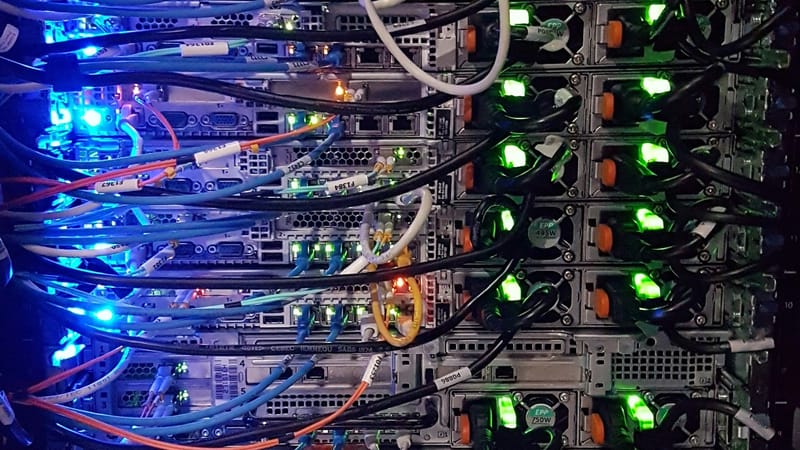Nvidia x OpenAI: Is the 10GW Supercomputer Spree Bullish for NVDA?

“If your friend says they’re only building ten nuclear reactors of compute, you probably buy them a coffee. Nvidia bought OpenAI a chequebook.”
We got sight of a fresh Goldman Sachs note on Nvidia this and it makes interesting reading. It is worth unpacking because it says as much about OpenAI’s appetite for capital as it does about Nvidia’s growth engine. The note is clear on the numbers, clear on the risks, and quietly provocative about the quality of some of the revenue Nvidia might record from this relationship.
Step 1: What just happened, and what did not
Nvidia and OpenAI have a letter of intent, not a final contract, to build at least 10 gigawatts of AI infrastructure using Nvidia systems. The first one gigawatt is targeted for the second half of 2026 on Nvidia’s next-generation Vera Rubin platform. To support that build, Nvidia intends to invest up to 100 billion dollars in OpenAI, released in stages as each gigawatt goes live. Think of it as a build now, fund as you hit milestones plan. It is big, it is staged, and it will live or die on execution and financing, not on a single press release.
The punchline for investors is simple. OpenAI wants to scale like a utility, and Nvidia wants to be the utility vendor.
Step 2: What Goldman is flagging
Goldman stays positive on Nvidia with a 12-month price target of $210. The firm argues that Nvidia’s core demand story remains intact even if some revenue tied to OpenAI ends up being circular, in other words, funded by Nvidia’s own equity that flows back as chip purchases. The important context is sizing. Goldman models this circular piece as a small slice of the pie, under roughly 15 per cent of revenue in 2027, and not something that breaks the thesis.
Why that matters is straightforward. Markets can live with a bit of accounting hair if the growth runway is long and clearly explained. Goldman also highlights two strategic offsets to the circularity worry. First, co-investing deepens the CUDA and systems ecosystem among developers and partners. Second, it signals real confidence to governments, hyperscalers and enterprises that the multi-gigawatt buildout is moving from talk to timetables.
Step 3: Follow the money to OpenAI
The spiciest part of the note is not about Nvidia; it is about OpenAI’s financial plumbing. Goldman’s model looks at OpenAI’s operating infrastructure costs in 2026 at roughly $35 billion. They apportion that across three buckets. OpenAI’s's-length own revenue contributes a bit under half. Vendor financing, which they assume includes Nvidia’s money, covers around a quarter to a third. The remainder is other equity and debt. In that framing, Nvidia could see about $13 billion of revenue from OpenAI in 2026, with roughly $10 billion of gross profit recycled into OpenAI’s equity.
Then there is the total cash lens. Once you include capital commitments for new sites and long lead equipment, Goldman’s tally of OpenAI’s infrastructure cash needs in 2026 balloons to something like $114 billion. That implies heavy reliance on external capital, potentially $60 to 80 billion of fresh funding, on how the Stargate and self-build plans sequence. The line worth underlining is that OpenAI’s sustainability depends increasingly on equity and debt financing.
If you are holding Nvidia, that is the tell. The customer’s spend is real, but the customer’s chequebook is a syndicate.
Step 4: What this means for Nvidia’s numbers
Goldman’s updated path has Nvidia’s revenue stepping up through the next three financial years with gross margins in the mid-70s and earnings per share climbing accordingly. The target price is built on a multiple of a normalised earnings figure, not a venture-style metric. Translation for the rest of us, the call is not paying for science fiction, it is paying for a very large, very physical data centre cycle with some hair on the edges.
The hair, again, is circularity. If a portion of the sales tied to OpenAI is funded by Nvidia’s own equity, the revenue is still real, but investors will treat it as lower quality than a clean, arm's-length hyperscaler order. Goldman’s stance is that this remains a minority of sales in their model. As long as Nvidia continues to broaden its buyer base across cloud providers, sovereign initiatives, hosters and new style infrastructure builders, the mix should remain healthy.
Step 5: Do not ignore the rest of the cast
OpenAI is not single-sourcing its ambition. In parallel, AMD has announced its own multi-year arrangement with OpenAI that could scale to multiple gigawatts of compute, alongside a warrant package that would give OpenAI a meaningful equity stake if milestones are met. The signal is twofold. Demand is running hot, and OpenAI wants diversification across suppliers. For Nvidia holders, that is not automatically bearish. It suggests the pie is expanding fast enough that several vendors can grow, and it nudges Nvidia to keep its product cadence sharp and its platform value obvious.
Step 6: A step-by-step way to think about positioning
- Scale sanity check. Ten gigawatts of AI data centres is enormous. It implies millions of accelerators over several years, brutal power and cooling requirements, and a long supply chain for memory, optics and networking. The first one gigawatt is not expected until late 2026. Timelines will matter as much as billings.
- Quality of revenue versus velocity of revenue. If around 10 billion dollars of gross profit is recycled to OpenAI in 2026, it is not fake, but it is not pristine. Your risk is not that Nvidia books zero, it is that some of what it books came from its own money. If that loop stays under about 15 per cent of revenue in 2027, the market can live with it, particularly if disclosures are crisp.
- Capital markets as a key input. OpenAI’s capex plan effectively securitises the future of AI demand. If credit conditions tighten, projects slide to the right. If markets stay open, the conveyor belt runs. Watch for large equity tranches, debt raises, and project finance milestones across OpenAI and its partner vehicles. In practice, this will show up in pulses of site announcements, power purchase agreements and equipment commitments.
- Ecosystem pull-through. Nvidia’s willingness to co-invest is not charity. It deepens the moat around CUDA, networking, and the software stack. That shows up later as developer loyalty, tooling depth, and system pull through. This is the flywheel that convinces bulls to tolerate a dash of circularity today.
- Execution markers to track. Look for confirmation that the letter of intent turns into definitive agreements. Look for site selection and power procurement for the first one gigawatt. Look for Vera Rubin production cadence updates. Listen for margin commentary that distinguishes recycled gross profit from retained revenue. And keep an ear out for demand broadening beyond frontier model training into enterprise inference, which tends to deliver steadier refresh cycles.
What the rest of Wall Street is thinking
Bank of America sounds broadly supportive, framing the 100 billion dollar commitment as a way to secure multi-year visibility if the 10 gigawatt programme runs to plan. Morgan Stanley leans bullish on the revenue opportunity, with blue sky scenarios that point to very large incremental sales tied to the OpenAI infrastructure wave. Citi remains upbeat on Nvidia’s road map beyond Vera Rubin, noting a product cadence that keeps utilisation high and units scarce, which supports pricing even as competition intensifies. Analyst round-ups across the wires read mixed, positive. Nvidia’s dominance looks reinforced, but questions linger about antitrust optics and the financial plumbing behind staged investments of this size. The press and investor blogs are already framing the core bull and bear. The bull case calls this the biggest AI infrastructure project in history, with milestone funding in place. The bear case asks how much of the boom is Nvidia cash being recycled back to Nvidia.
So, buy, sell, or breathe into a paper bag?
Here is the balanced read for an average investor who does not want to be lectured by a spreadsheet. Nvidia’s pact with OpenAI is engineered to lock in the next leg of the AI buildout. The numbers are wild because the ambition is wild. Goldman’s note helps because it separates growth from quality of growth. Even if a portion of sales is helped along by Nvidia’s equity, the firm thinks the aggregate remains dominated by genuine, externally funded demand.
If you are long Nvidia, you are betting that capital markets remain open for OpenAI and its peers, that Nvidia’s product cadence across chips, systems, networking and software sustains a margin structure the Street still underestimates, and that circularity stays a side dish, not the main course. If you are on the fence, watch for the first one-gigawatt milestones in the second half of 2026 and for how management frames circular revenue in guidance. If you want to de-risk the idea, the unsexy picks and shovels around the build, power, cooling, optics, high bandwidth memory, still look under-owned relative to the headlines.
The quiet headline inside the headline is this. The Goldman report is not a dunk on Nvidia. It is a nudge to underwrite OpenAI’s funding path with the same rigour you underwrite Nvidia’s product path. If the money shows up, the systems will too. If it does not, timelines slip, but the direction of travel probably does not.






